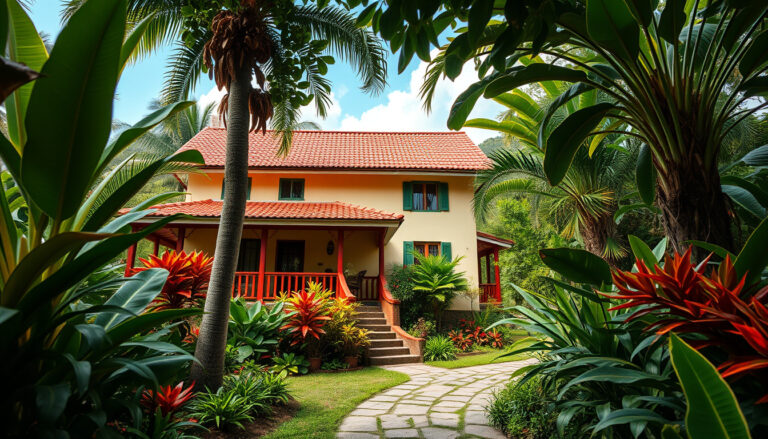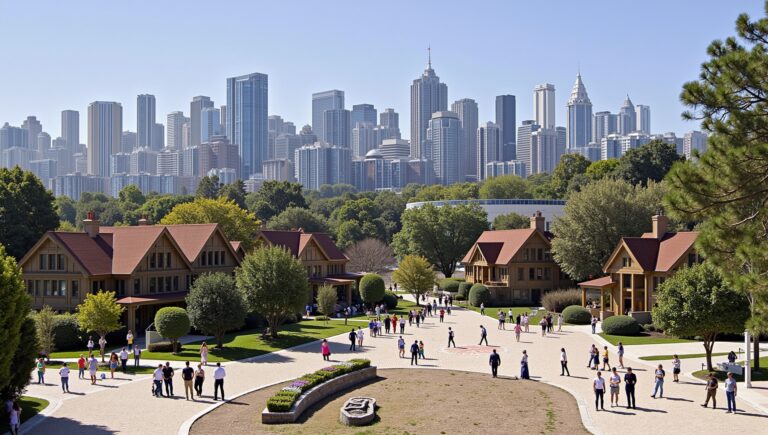Investing in real estate can be a rewarding venture, especially in a paradise like Costa Rica.
If you’re considering entering this vibrant market, understanding the concept of rental yield is crucial for maximizing your investment.
This comprehensive guide will delve into what rental yield is, why it matters, and how to effectively navigate the unique landscape of Costa Rica’s real estate market.

Key Takeaways
- Rental yield measures the income generated from an investment property, crucial for assessing real estate profitability.
- Costa Rica’s growing tourism and expatriate population create a unique real estate market dynamic.
- Factors such as location, property type, and market demand significantly influence rental yield in Costa Rica.
- Short-term rentals often yield higher returns compared to long-term leases, but come with different management challenges.
- Understanding local laws and tax implications is essential for maximizing rental yield and ensuring compliance in Costa Rica.
What is Rental Yield and Why It Matters
When exploring investment opportunities in Costa Rica, understanding rental yield is crucial for potential property owners.
Rental yield in Costa Rica refers to the income generated by a rental property, expressed as a percentage of the property’s value.
It serves as a vital metric when considering real estate investments, allowing investors to assess the profitability of their properties.
High rental yields indicate a strong return on investment, making it easier to cover costs such as mortgage payments, property maintenance, and taxes.
Moreover, the allure of rental yield in Costa Rica is heightened by the country’s booming tourism industry, which drives demand for vacation rentals in popular hotspots like Manuel Antonio, Tamarindo, and Arenal.
Therefore, for anyone considering entering the Costa Rican real estate market, understanding rental yield is not only beneficial—it’s essential for maximizing investment potential.
Understanding Costa Rica’s Real Estate Market
When exploring the vibrant landscape of Costa Rica’s real estate market, one term that often arises is ‘rental yield in Costa Rica.’ This metric is crucial for investors looking to maximize their returns on property investments in this tropical paradise.
The rental yield, calculated as the annual rental income divided by the property’s purchase price, can significantly influence your decision-making process.
Many regions in Costa Rica, such as Guanacaste and the Central Valley, offer lucrative opportunities for rental yields due to their growing tourism appeal and increasing expatriate population.
With a favorable climate, stunning natural beauty, and a stable political environment, Costa Rica not only attracts holidaymakers but also long-term residents seeking a better quality of life.
Understanding the factors that contribute to high rental yields, such as location, property type, and market demand, will empower investors to find properties that not only appreciate over time but also provide consistent cash flow.
Therefore, as you delve deeper into Costa Rica’s real estate market, keep an eye on the rental yield to ensure you make informed and profitable investment choices.
‘The best investment you can make is in yourself. The more you learn, the more you earn.’ – Warren Buffett

Factors Influencing Rental Yield in Costa Rica
When considering rental yield in Costa Rica, several key factors come into play that can significantly influence the return on investment for property owners.
One of the primary factors is location; properties situated in popular tourist destinations, such as Tamarindo or Manuel Antonio, tend to attract higher occupancy rates, thereby boosting rental yield.
Additionally, the condition and amenities of the property itself are vital; well-maintained homes with modern conveniences often command higher rental prices.
Furthermore, seasonal demand can affect rental yield in Costa Rica, as tourist influx during peak seasons leads to increased rental income, while off-peak times may see a dip.
Understanding local property management practices and legal regulations also plays a crucial role in optimizing rental yield, ensuring that property owners can navigate the market efficiently and maximize their investment.
By factoring in these elements, investors can better position themselves to capitalize on the lucrative rental market in this beautiful Central American country.
Comparing Short-Term vs Long-Term Rentals
When diving into the real estate market in Costa Rica, one crucial aspect investors must consider is the rental yield in Costa Rica offers for different types of rental strategies.
Short-term rentals, often managed through platforms like Airbnb, promise a swift return on investment, especially in tourist-heavy areas like Tamarindo and Manuel Antonio.
These regions attract a steady stream of visitors eager to explore the natural beauty and enjoy recreational activities, thus driving up nightly rates and occupancy levels.
However, operating short-term rentals requires active management and maintenance, including cleaning services and guest communication.
On the other hand, long-term rentals usually yield more stable cash flow with minimal management demands.
Properties in urban areas like San José or coastal neighborhoods can cater to local residents, resulting in consistent rental income.
Ultimately, the choice between short-term and long-term rentals hinges on individual investor goals, but understanding the dynamics of rental yield in Costa Rica is essential for making an informed decision in this vibrant and burgeoning real estate market.

Tips for Maximizing Rental Yield
When it comes to generating income from your investment, understanding rental yield in Costa Rica is paramount for maximizing returns.
First, consider the location of your property; areas frequented by tourists, such as Arenal or Guanacaste, often yield higher rental returns due to consistent demand.
Additionally, enhance your property’s appeal by investing in modern furnishings and amenities, which can justify premium rental rates.
Marketing your property effectively can also boost visibility—utilize popular platforms and take high-quality photos to attract more potential renters.
Finally, ensure your property stands out by providing exceptional service and maintaining a strong online presence through positive reviews, which can enhance trust and attract repeat clients.
Navigating Legal and Tax Considerations in Costa Rica
When considering investing in Costa Rica real estate, it is crucial to navigate the legal and tax considerations to maximize your rental yield in Costa Rica.
Understanding the property ownership laws, particularly for foreigners, is essential.
In Costa Rica, foreigners can own property just like locals; however, it is advisable to seek legal assistance to ensure adherence to local regulations and to facilitate a smooth transaction.
Additionally, potential investors should be aware of the tax implications associated with property investment in Costa Rica.
For instance, property taxes are generally low, but understanding income tax requirements for rental income can significantly impact your returns.
By engaging with local legal experts and real estate agents, you can streamline the process and position yourself to enjoy substantial rental yield in Costa Rica, capitalizing on the booming rental market driven by tourism and expat relocation.
Frequently Asked Questions
What is rental yield and why is it important?
Rental yield is a measure of the income generated from an investment property relative to its cost.
It is important because it helps investors understand the profitability of their property investment, allowing them to make informed decisions.
How does the real estate market in Costa Rica affect rental yield?
The real estate market in Costa Rica is influenced by factors such as tourism, local demand, and economic trends, which can impact rental prices and occupancy rates, ultimately affecting rental yield.
What factors should I consider to maximize my rental yield in Costa Rica?
To maximize rental yield, consider factors such as location, property type, the rental market trends, marketing strategies, and setting competitive rental prices.
Is it better to invest in short-term or long-term rentals in Costa Rica?
It depends on your investment goals.
Short-term rentals often generate higher rental yields due to higher nightly rates, while long-term rentals provide more stable income with less management effort.
What legal and tax considerations should I be aware of when renting property in Costa Rica?
When renting property in Costa Rica, it’s important to understand local rental laws, tax obligations, and any necessary permits or licenses to ensure compliance and avoid penalties.





